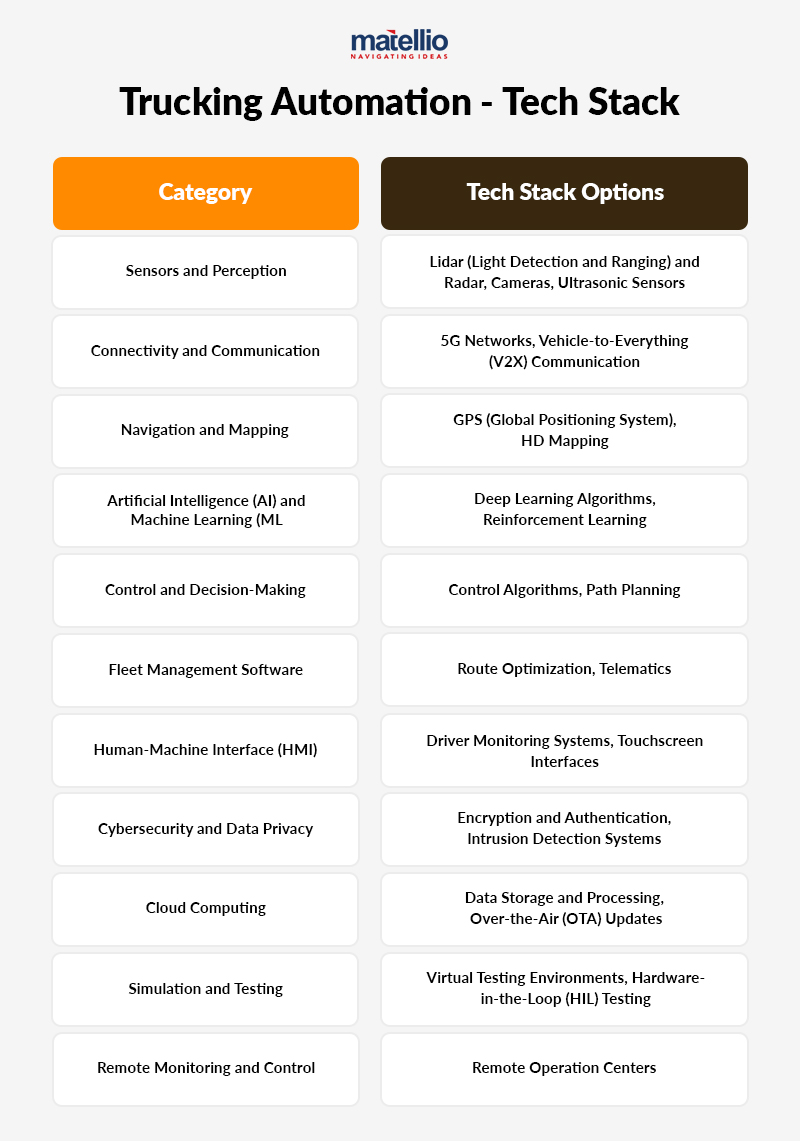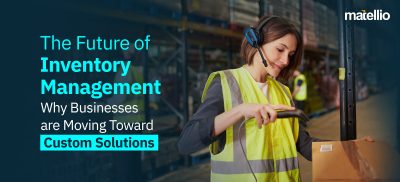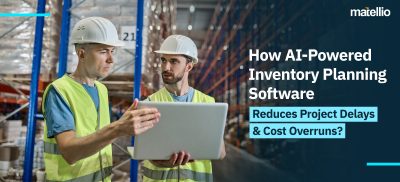
With technology rolling towards advancements, more and more of our lives are depending on automation. Whether we talk about fashion, or healthcare, or manufacturing, or anything. Just think of an industry, and automation is already there, making its place. Behind this wheel of change, one such area that technology is steering is – the trucking industry, redefining the way we envision the road ahead.
The allure of increased efficiency, enhanced safety, and the potential to reshape the very fabric of logistics has led to the rise in demand for automation in trucking.
If we talk about the numbers,

This demand for automation isn’t simply a trend; it’s a crucial response to the challenges of our times. So, if you are thinking of truckloading automation system development, go for it! This will surely make a transformation to your business in a way never thought of before.
What exactly is trucking automation? How will it influence road safety? What effect will it have on the industry? How can truck loading automation system development be done? Let’s find out.
What is Trucking Automation?
Trucking automation is like the evolution of a classic road trip—a journey where technology takes the wheel.
Instead of a human driver gripping the steering wheel, trucking automation is a combination of algorithms and sensors that navigate the road. These smart trucks can adjust their speed, stay within lanes, and even react to sudden changes in traffic—all without missing a beat.
A game-changer for industries and economies alike!
Trucking automation is basically the integration of advanced technologies and autonomous systems into commercial trucks with the goal of reducing or removing the need for direct human intervention in various aspects of their operation.
It involves equipping trucks with a combination of sensors, cameras, radar, lidar, GPS, and sophisticated software that enables them to perceive their environment, make real-time decisions, and execute actions typically performed by human drivers.
Picture this: a world where goods move faster, safer, and more efficiently. It’s the promise of fewer delays, quicker deliveries, and a logistical symphony that plays out seamlessly. And it’s not just about the highways; automation ripples through warehouses, delivery centers, and beyond, transforming the way we think about the journey from point A to point B.
Automation in the trucking industry: Stats and Figures
Here are some trucking automation stats and figures
- The global autonomous truck market size was valued at USD 30.70 billion in 2022 and is expected to be worth USD 33 billion in 2023.
- The global Semi-Autonomous & Autonomous Truck Market size is projected to grow from 948 thousand units in 2020 to reach 3,254 thousand units by 2025, at a CAGR of 28.0%
- The global autonomous trucks market size was estimated at USD 1.07 billion in 2022 and is expected to hit around USD 5.36 billion by 2032, growing at a CAGR of 17.49% during the forecast period from 2023 to 2032.
- The global Autonomous Truck market size was valued at USD 14285.15 million in 2021 and is expected to expand at a CAGR of 37.18% during the forecast period, reaching USD 95203.81 million by 2027.
- Autonomous Trucks Market size was valued at USD 2,687.42 Million in 2022 and is projected to reach USD 8,576.29 Million by 2030, growing at a CAGR of 13.24% from 2024 to 2030.
These statistics and figures shed light on the transformative potential of automation in the trucking industry. The adoption of automation technology is increasing in all industries as businesses look for ways to improve efficiency, productivity, and safety.
If you are looking for such enterprise solutions, it is always advisable to contact a leading trucking automation company like ours to provide your business with a touch of automation.
Let’s talk about the features now!
Automation in the Trucking Industry: The Features to Include
For transforming your business into a trucking automation company, these are the few important features that you should never miss.
 Safeguarding Lives, Every Mile:
Safeguarding Lives, Every Mile:
At the core of any automation system lies safety. Incorporate advanced sensors and real-time data analysis to create a fail-safe environment. The ability to detect obstacles, adjust to weather conditions, and make split-second decisions ensures not just efficient delivery but also secures lives on the road.
 Seamless Human-Machine Interface:
Seamless Human-Machine Interface:
Automation isn’t about replacing humans, but it’s an add-on to their capabilities. You can take the help of us to develop such an interface for your trucking automation company that will let truckers easily make transitions between manual and autonomous modes.
 Adaptive Learning:
Adaptive Learning:
Your automation system should be designed in such a way that it should be able to learn and evolve with each journey. The system should have the capacity to adapt to diverse terrains, road conditions, and traffic patterns, making it more proficient over time, creating a safer and more efficient experience.
Also Read- Adaptive AI Systems Development: All You Need to Know
 Real-Time Communication:
Real-Time Communication:
Your automation system should be able to communicate not just within the vehicle but also with other trucks on the road, infrastructure, and traffic management systems. Real-time data exchange enhances overall traffic flow, minimizes congestion, and optimizes routes.
 Remote Monitoring and Diagnostics:
Remote Monitoring and Diagnostics:
Remote handling is what demands automation the most. Make sure that your automation system lets your fleet managers remotely monitor and diagnose the health of each automated truck. Also, they can do predictive maintenance, real-time diagnostics, and proactive troubleshooting to lower downtime and operational disruptions.
 Compliance and Regulation Adherence:
Compliance and Regulation Adherence:
Ensuring that your automation system meets safety and legal standards will bring confidence among stakeholders and lead the way for smoother implementation.
Check in on the concerns about data security and privacy head-on. We will help you incorporate robust encryption protocols and mechanisms to protect your sensitive information, assuring truckers and clients that their data is safeguarded at all times.
These are some of the most important factors to consider while implementing automation in the trucking industry. So, prefer contacting us for such digital transformation services.
Your system’s architecture should be designed in such a way that it is adaptable and ready for the future. And as the technology evolves, it should have the ability to seamlessly integrate new sensors, software updates, and hardware components to stay competitive in the growing market.
Read More: Custom Truck Dispatch Software – Benefits, Features, and Development Process
Why Invest in Trucking Automation Systems?
If you’re thinking of whether to take risks on this transformation, let me tell you, it’s worth taking! Let’s see some of the reasons why investing in a trucking automation system might be the best move you make for your business:
- Automation significantly reduces the risk of accidents caused by human error, making roads safer for everyone.
- Automation doesn’t tire. It operates 24/7 without breaks, fatigue, or sleep deprivation. This means that you will be getting faster deliveries, optimized routes, and enhanced operational efficiency.
- With reduced labor expenses and better fuel efficiency due to optimized driving patterns, you can enjoy substantial savings in the long haul with automation, i.e., cutting costs.
- It offers a solution by augmenting the workforce, allowing human drivers to focus on monitoring and complex decision-making.
- Automation also optimizes routes and driving patterns, minimizing idle time and delays. This will lead to quicker deliveries, streamlined operations, less fuel consumption, and satisfied customers.
- From weather changes to road closures, automation adapts. It assesses situations and responds accordingly, ensuring deliveries are made even in the face of unexpected challenges.
The world of trucking is evolving rapidly. By investing in automation, you are future-proofing your business against the disruptions and challenges that lie ahead.
Automation is your vehicle to get there faster, smarter, and safer.
How to Develop Trucking Automation System
Developing a trucking automation system might seem like a complex journey. But fear not – here’s a human-friendly roadmap to guide you through the process:
Step 1: Define Your Vision
Before diving into the nuts and bolts, envision what you want to achieve. Are you aiming for partial or full automation? Define your goals clearly, keeping safety, efficiency, and scalability in mind. What are the latest trends and technologies to consider while implementing automation in the trucking industry? And also see how your competitors are handling their processes.
Study existing technologies, regulations, and market trends. Identify gaps and opportunities. Plan how your system will fill those gaps and capitalize on those opportunities.
Read More: Top 5 Automated Logistics Systems for a Profitable Business
Step 2: Gather a Skilled Team
Just like a convoy of trucks, you need a skilled crew to build your automation system. Assemble experts in transportation software development, AI, robotics, and engineering to form a well-rounded team.
Or, by choosing an experienced development company like Matellio, you can easily get the required services under one roof. Our experienced developers follow the best methodologies, which help you eliminate rework and surprises and offer you more time to market your product.
Step 3: Map Out the Technology
Lay down the foundation by selecting the right technologies. From sensors and cameras to GPS and machine learning algorithms, each piece contributes to the puzzle. Consider the hardware and software that best suits your vision.
Here are the tech stack options you can choose from:

Remember that the specific tech stack will depend on your goals, budget, and the level of automation you’re aiming for. Integrating these technologies can lead to safer, more efficient, and better productive operations within the trucking industry.
Step 4: Design User Interfaces
Automation doesn’t mean cutting ties with humans. Hire a dedicated designer for this one, as the design is what decides how your system will work. Design intuitive interfaces that allow operators to monitor intervene when needed, and ensure the system runs smoothly. Make sure that you keep it user-friendly – like navigating a well-marked highway.
Step 5: Collect and Analyze the Data
Data is your fuel. So, don’t forget to equip your system with sensors that collect real-time data about the truck’s surroundings, road conditions, and performance. Analyze this data to refine your system’s decision-making capabilities.
Develop AI algorithms that interpret data from sensors and make real-time decisions.
Step 6: Test in Controlled Environments
Now that the system is ready hire a tester who can perform rigorous testing on the process. You wouldn’t set off on a journey without a test drive, would you? Put your system through its paces. Conduct rigorous testing in controlled environments.
Step 7: Gradual Implementation
Start small. Begin with features like adaptive cruise control and lane-keeping assistance. As your system gains reliability, gradually introduce more automation features while ensuring the human “driver” maintains oversight.
Step 8: Collaborate with Industry
Work closely with the trucking industry to understand its needs and concerns. Collaboration ensures your system aligns with industry standards, regulations, and safety requirements.
Step 9: Address Safety Concerns
Safety is your north star. Implement fail-safe mechanisms that allow the system to hand control back to a human driver when situations become too complex. This redundancy builds trust and enhances safety.
Step 10: Monitor and Evolve
Once on the road, the journey doesn’t end. Continuously monitor the system’s performance, gather feedback from operators, and apply updates. Just like a driver’s experience, your system will improve over time.
Remember, building a trucking automation system is like embarking on an adventure – it requires planning, collaboration, and adaptability. By following these steps and navigating challenges with determination, you’re on your way to reshaping the landscape of transportation with your very own automation masterpiece.
Why Choose Matellio?
The growing desire for trucking automation has become an overwhelming echo throughout the landscape, pushed by the integration of technological ability and the needs of a quickly changing world. With automation in the trucking industry, you will have better efficiency, optimize operations, reduce human error, improve safety, and the ability to transform the very fabric of logistics.
This urge for automation is not going to stop, so if you want to lead the race, contacting a leading transportation software development company like ours is the best choice.
We have a team of professionals having experience working in the transportation industry, and our experts are also aware of every aspect of AI.
Along with this, we also follow robust security measures ensuring that all your information is safe with us. You get an agile approach to working from our end so that the entire process stays transparent for you.
Feel free to contact us anytime; we are happy to help…:)

 Safeguarding Lives, Every Mile:
Safeguarding Lives, Every Mile: Seamless Human-Machine Interface:
Seamless Human-Machine Interface: Adaptive Learning:
Adaptive Learning: Real-Time Communication:
Real-Time Communication: Remote Monitoring and Diagnostics:
Remote Monitoring and Diagnostics: Compliance and Regulation Adherence:
Compliance and Regulation Adherence:



